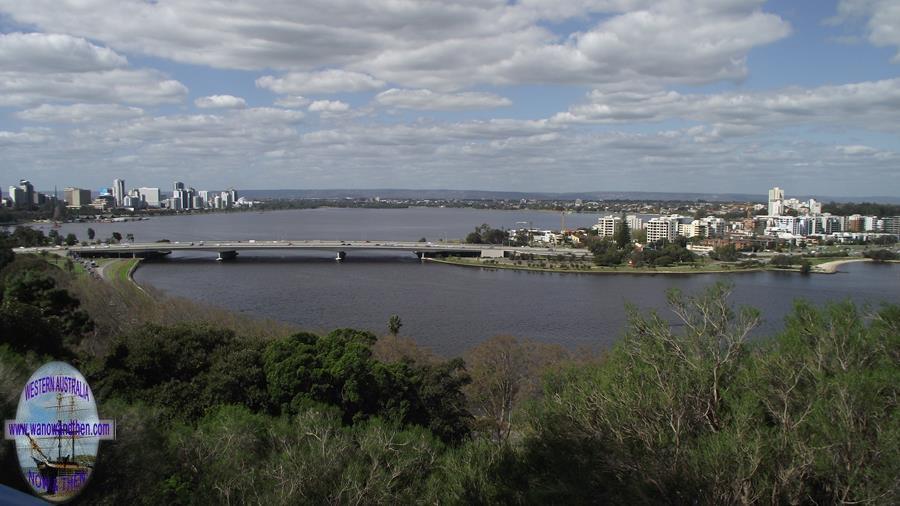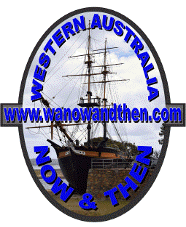|
In 1697 Willem De Vlamingh (there are alternate spellings of this name) named the Swan River after
the large flocks of black swans which inhabited the area. The original name was actually 'Swartte Swaane Drift' (Black Swan River).
Francis-Antoine Boniface Heirisson was the first person to draw a detailed map of the river in 1801 and Heirisson Island - where the causeway crosses) was named after him.
When James Stirling gave the river the English name 'Swan River', he only applied it to that portion of the river
upstream of Heirisson Island. The section from the island downstream to Fremantle was referred to as Melville Water - a name that is still used today - although now the name Sawn
River encompasses both sections. It is more correct to refer to the down stream area as the Swan Estuary.
At the time the river near where Perth sits today was described as a 'little bit brackish' (salty). Today it is as salty as the ocean and this is due to the removal of the rock bar at Fremantle,
the damming of the Helena River and the Hotham River turning salty due to land clearing in the wheat belt.
Each winter an influx of freshwater from rain run-off flushes out some of the salt water. This means the creatures that live in the river must develop different responses to survive the rapid change in environment.
Crabs, prawns and other salt-water species, simply swim out to sea but shellfish that cannot move must find ways to cope with the fresh water or perish.
Migratory birds from the northern hemisphere visit the Swan Estuary each year and the marine sanctuaries of Alfred Cove, Pelican Point and Milyu Beach become an important refuge in the highly urbanised area.
140 species of birds are known to inhabit the area along the river. Some 10,000 migratory wading birds visit the estuary each summer with some coming from as far away as Siberia.
The river is home to many marine creatures including some that many never see. The Bobtail Squid or Dumpling Squid (Sepiolida) which are not a true squid and the Australian Seahorse can be found in the river
alongside more common residents like jellyfish, cobbler, crabs, prawns and visiting dolphins. Sharks are also known to inhabit the waters.
The river was once a vital commercial link between Fremantle, Perth and Guildford. It could be as expensive to ship goods from Fremantle to Guildford as it was to get the same goods all the way from England to Australia.
Surprisingly for a river running trough a major city, the Sawn is relatively unpolluted. Apart from the occasional algal bloom in summer, (which is usually localised and in the upper reaches) the waters are mostly safe
for swimming and water sports. Fish caught in the river are also safe to eat (although it is a good idea to listen for algae bloom warnings on radio and TV in the hotter months.)
Although most people don't realise it, the headwaters of the Swan River rise near Pingelly and for the first part of its journey through the hills, it is called the Avon River. This came about because at
the time of discovery of the Avon no-one realised it was in fact the headwaters of the Swan. The name remained in use and has never been changed.
32 hectares of the river were reclaimed to provide room for the Narrows Bridge interchange on the north bank. There has been a good deal of re-shaping and dredging of the river both to stop flooding and to provide land for development.
The river was once a major obstacle to travel but today there are 18 bridges spanning its waters. Starting at Fremantle and heading upstream these include:
Fremantle Railway Bridge
Fremantle Traffic Bridge
Stirling Bridge
Narrows Bridge
The Causeway
Goongoonup Bridge
Windan Bridge
Garratt Road Bridge
Redcliffe Bridge
Guildford Road Bridge
Guildford Railway Bridge
Barkers Bridge
Whiteman Bridge
Upper Swan Bridge
Why does this list only show 14 bridges when we just said there were 18? because the Narrows is actually 3 separate bridges, the Causeway is 2 and Garratt Road is 2.
Over the years the river has been subject to flooding with the worst on record taking place in 1872. The most recent flood was in the late 1983 but with falling yearly rainfall averages, the
threat of further floods is diminishing.
The mystery of the oysters.
From the early days of settlement it was noticed that the river contained many hundreds of tons of oyster shells, but strangely no live oysters. Middens of shells on the bank meant that the local
Aborigines had once feasted on the shellfish but all the oysters had apparently died out. The theory is that at some point in time the mouth of the river silted over and a large influx of fresh water
killed the oysters in one major catastrophe.
The defunct oysters did leave behind something of value, their shells. With a high lime content they were used to make cement by the Swan Cement Company and over 3 million tons of shell
were dredged from the river between 1927-1956.
North - South rivalry.
People seem to have a natural tendency to divide each other into the groups 'them' and 'us'. This tendency is frequently highlighted between states and cities (especially between Sydney and Melbourne)
but there is also a historic rivalry between those living north of the Swan River and those living to the south. It is perhaps less pronounced today than it used to be but at one time some businesses operated
with separate phone numbers for north and south customers.
Swan River Trust
This organisation was established to oversee the use, health and condition of both the Swan and Canning Rivers. It meets bi-monthly, providing advice to the Minister for the Environment, the Western
Australian Planning Commission and local governments on the future development of the river and its surrounds.
FLOODS
YEAR |
1862 |
1872 |
1910 |
1917 |
1926 |
1930 |
1945 |
1946 |
1955 |
1958 |
1963 |
1964 |
1983 |
|







